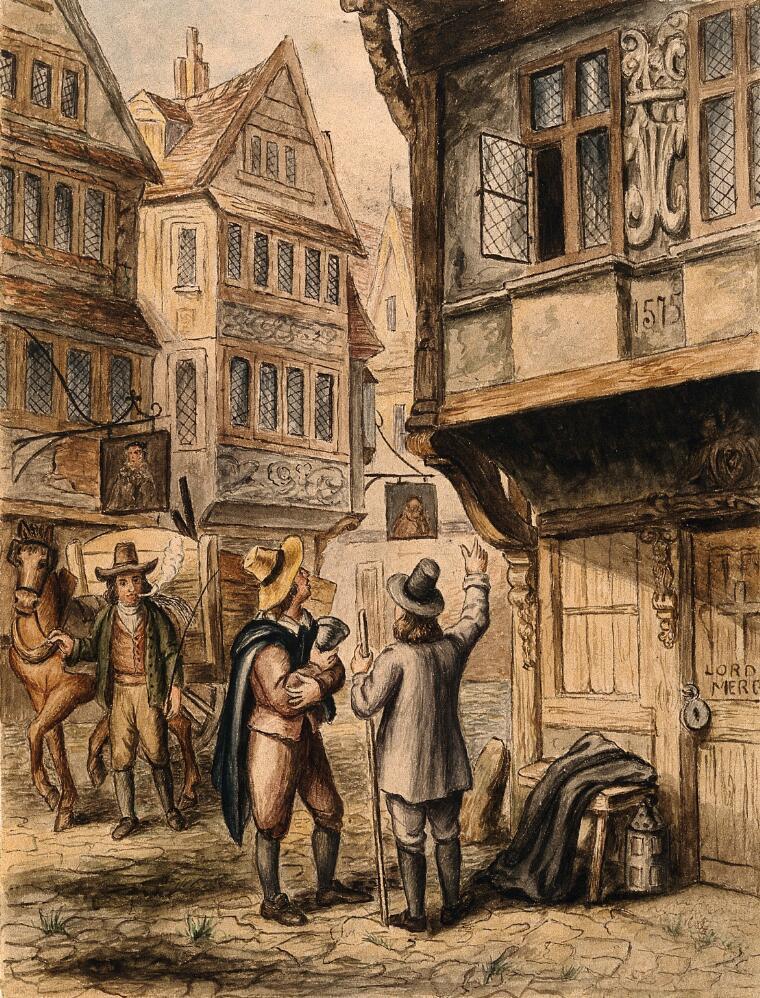(MENAFN- The Conversation) Alcohol deaths in England and Wales in 2020 were the . The recorded 7,423 deaths from alcohol misuse, a 19.6% increase compared with 2019. Although this is likely to have many complex causes, data from suggests that the COVID-19 pandemic and its resulting lockdowns are at least partly responsible for the increase. Largely, the disruption of work and social routines have led to a surge of hazardous drinking within the home (with some fairly ).
The project, of which I''m part, has been exploring how pandemics also influenced the use of intoxicants, including patterns of alcohol consumption, in the past. As part of this work, we''ve looked at how the that gripped England, especially London, in the 17th century (1603, 1625, 1636 and 1665) wrought similar changes in people's drinking habits.
Like today, these sudden and frightening outbreaks of disease restricted access to inns, taverns, alehouses and other public drinking places – the . While never subject to wholesale closure, these environments were targeted by the equivalent of social distancing legislation. A 1665 London plague order, for example, identified ''tippling in taverns, alehouses, coffee-houses, and cellars'' as ''the greatest occasion of dispersing the plague'', and imposed a 9pm curfew.
The extent to which these regulations altered 17th-century people's relationship with alcohol is difficult to determine based on surviving information. However, anecdotal evidence suggests there might have been a comparable shift towards drinking at home.
In his classic 1722 meditation on the 1665 London outbreak , Daniel Defoe told the story of a London grocer who voluntarily quarantined himself and his family in their home for the duration of the pandemic. Among the provisions he assembled were 12 hogsheads of beer; casks and rundlets containing four varieties of wine (canary, malmsey, sack and tent; 16 gallons of brandy; and ''many sorts of distill''d waters'' (spirits).

A painting of a quarantined house during the 1665 London plague outbreak, with the signboards of public houses visible in the background. , According to Defoe, this impressive stockpile was not gratuitous but ''necessary supplies''. This is because, surprisingly from the perspective of today's public health messaging, in this period alcohol was thought to have had medicinal value and its moderate consumption during plague outbreaks was actively encouraged.
Doctor's orders
Contemporary doctors and medical writers believed alcohol worked as a plague preventatives, in two main ways.
First, the consumption of beers, wines and spirits was believed to strengthen the body's key defensive organs of the brain, heart and liver. They were especially beneficial when taken first thing in the morning, with many commentators recommending fortifying liquid plague breakfasts.
In his 1665 plague treatise, Medela Pestilentiae, minister and medical writer Richard Kephale claimed that it's good ''to drink a pint of maligo [Malaga wine or port] in the morning against the infection''. (He was also effusive on ''the inexpressible virtues of tobacco''.) Many recipes for the popular ''preventative'' and ''cure'' invariably contain wine and spirits, as well as pharmaceutical herbs.
Second, and perhaps more significantly, moderate drinking was believed to ward off those fearful mental states that induced melancholy (early modern terminology for depression), which was thought to make people more vulnerable to contracting the plague.
As Defoe put it, the grocer's liquor hoard was not for his and his family's ''mirth or plentiful drinking'', but rather 'so as not to suffer their spirits to sink or be dejected, as on such melancholy occasions they might be supposed to do''. Likewise, in his 1665 plague treatise, Zenexton Ante-Pestilentiale, physician William Simpson advocated the ''drinking of good wholesome well-spirited liquor'' to ''make the heart merry'' and ''cause cheerfulness''. This would banish ''many enormous ideas of fear, hatred, anxiousness, sorrow, and other perplexing thoughts'', and thereby ''fortify the balsam of life against all infectious breaths''.

Engraving of the 1665 London outbreak. , The key thing for all of these writers was alcohol ''moderately taken''. Excessive drinking to the point of drunkenness was still cautioned against, and ''living with temperance upon a good generous diet'' (in the words of ) remained the baseline for most plague medicine.
However, then as now, it's likely that the disruption of patterns of labour and leisure, along with the daily anxieties of living in a plague-stricken city, drove many to the psychological consolations of the bottle on a more dangerous and habitual basis. In – Defoe's other, more celebrated novel about the 1665 London outbreak – he tells the story of a physician who kept his 'spirits always high and hot with cordials and wine''. But ''could not leave them off when the infection was quite gone, and so became a sot for all his life after''.
MENAFN13052021000199003603ID1102076947
Legal Disclaimer:
MENAFN provides the information “as is” without warranty of any kind. We do not accept any responsibility or liability for the accuracy, content, images, videos, licenses, completeness, legality, or reliability of the information contained in this article. If you have any complaints or copyright issues related to this article, kindly contact the provider above.